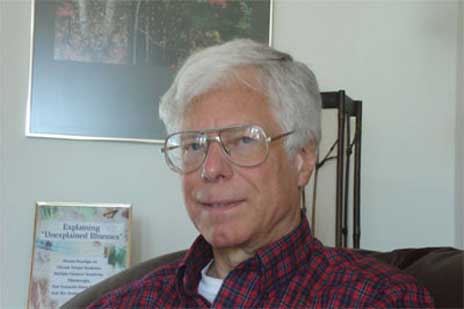Pesticides exposure linked to suicidal thoughts

A new study in China has found that people with higher levels of pesticide exposure are more likely to have suicidal thoughts. The study was carried out by Dr Robert Stewart from the Institute of Psychiatry at King’s College London together with scientists from Tongde Hospital Zhejiang Province.
The agricultural pesticides commonly used in China are organophosphates which are in wide use in many lower income countries but have been banned in many Western nations. It is well known that they are very dangerous if ingested as an overdose but there is also biological evidence that chronic low-grade exposure to these chemicals, which are very easily absorbed into the body through the skin and lungs, may have adverse effects on mental health. This study is the first epidemiological evidence to suggest possible effects on suicidal thoughts.
The study was carried out in central/coastal China, a relatively wealthy area with a rapidly developing economy. In a very large survey of mental health in rural community residents, participants were also asked about how they stored pesticides. The study found that people who stored pesticides at home, i.e. those with more exposure, were more likely to report recent suicidal thoughts. Supporting this, the survey also found suicidal thoughts to be associated with how easily accessible these pesticides were in the home and that the geographic areas with highest home storage of pesticides also had highest levels of suicidal thoughts in their populations.
Given the high level of pesticide exposure and the high suicide risk in rural China, clarification of the causal mechanisms underlying this association and the development of appropriate interventions should be priorities for public health and health policy.
Dr Robert Stewart comments: ‘Organophosphate pesticides are widely used around the world although are banned in many countries because of their risk to health. They are particularly lethal chemicals when taken in overdose and are a cause of many suicides worldwide. Our research findings that suggest that higher exposure to these chemicals might actually increase the risk of suicidal thoughts provides further support for calls for tighter international restrictions on agricultural pesticide availability and use.’
Dr Jianmin Zhang, Associate Chief Psychiatrist, Tongde Hospital of Zhejiang Province, and Vice Director, Zhejiang Office of Mental Health, China added: “The findings of this study suggested potential causal links and might partially account for the much higher incidence of suicide in rural than urban areas of China. However, further studies particularly with more precisely defined and assessed exposure are critically needed, as awareness of safer access to pesticides is important both to policy-makers and pesticide users.”
Reference: King’s College London, Pesticides exposure linked to suicidal thoughts, October 22, 2009
Notes:
Pesticide exposure and suicidal ideation in rural communities in Zhejiang province, China by Jianmin Zhang, Robert Stewart, Michael Phillips, Qichang Shi & Martin Prince was published in the October issue of the WHO Bulletin. The full article can be accessed on http://www.who.int/bulletin/volumes/87/10/08-054122.pdf
The analysis involved data from a survey of a representative sample of 9,811 rural residents in Zhejiang province who had been asked about the storage of pesticides at home and about whether or not they had considered suicide within the two years before the interview. The Chinese version of the 12-item General Health Questionnaire (GHQ) was administered to screen for mental disorder.

 A major paper on multiple chemical sensitivity by Professor Martin L. Pall is to be published October 23, 2009 as chapter XX in a prestigious reference work for professional toxicologists, “General and Applied Toxicology, 3rd Edition” (John Wiley & Sons). Multiple chemical sensitivity (MCS) is also known as chemical sensitivity, chemical intolerance and toxicant-induced loss of tolerance, with this last name emphasizing the role of chemicals in initiating cases of this disease. Pall’s paper, entitled Multiple Chemical Sensitivity: Toxicological Questions and Mechanisms, establishes five important facts about MCS:
A major paper on multiple chemical sensitivity by Professor Martin L. Pall is to be published October 23, 2009 as chapter XX in a prestigious reference work for professional toxicologists, “General and Applied Toxicology, 3rd Edition” (John Wiley & Sons). Multiple chemical sensitivity (MCS) is also known as chemical sensitivity, chemical intolerance and toxicant-induced loss of tolerance, with this last name emphasizing the role of chemicals in initiating cases of this disease. Pall’s paper, entitled Multiple Chemical Sensitivity: Toxicological Questions and Mechanisms, establishes five important facts about MCS:

